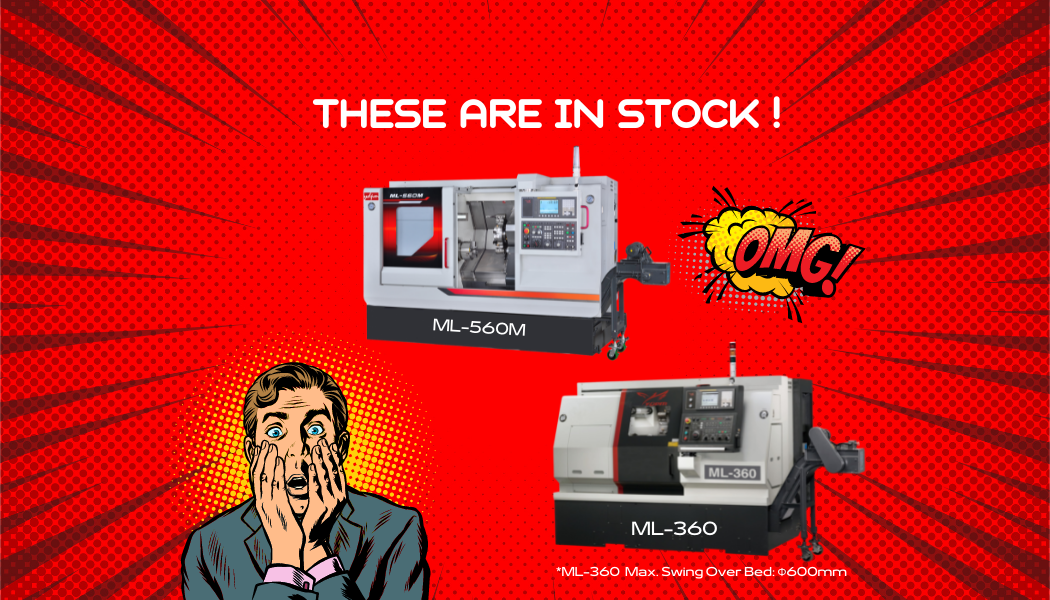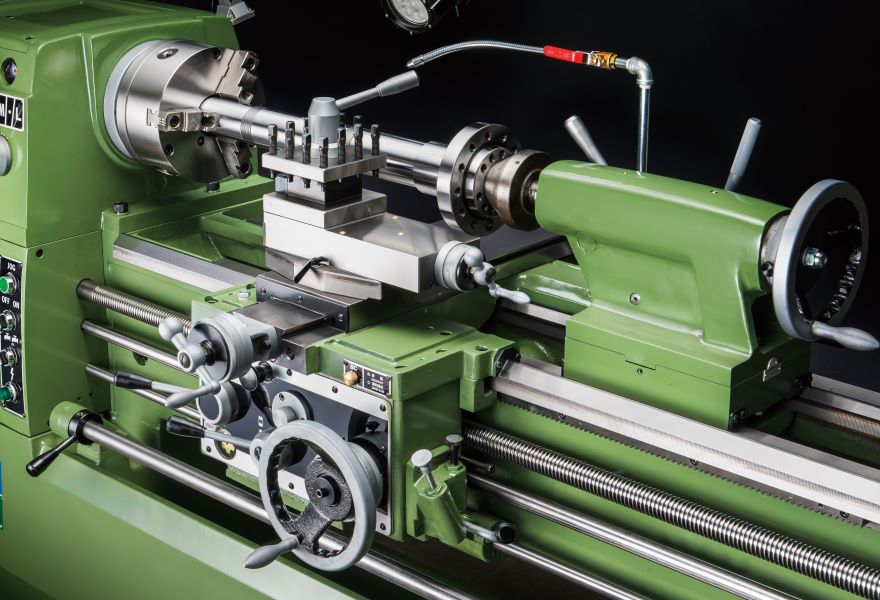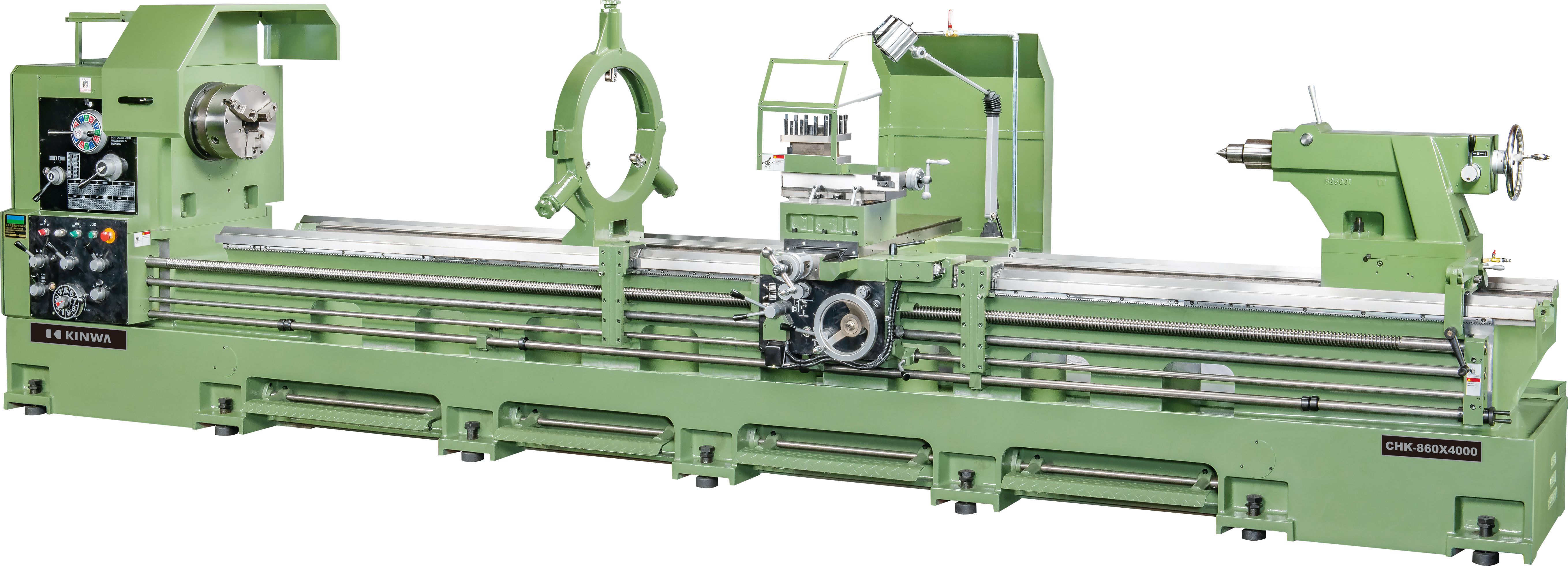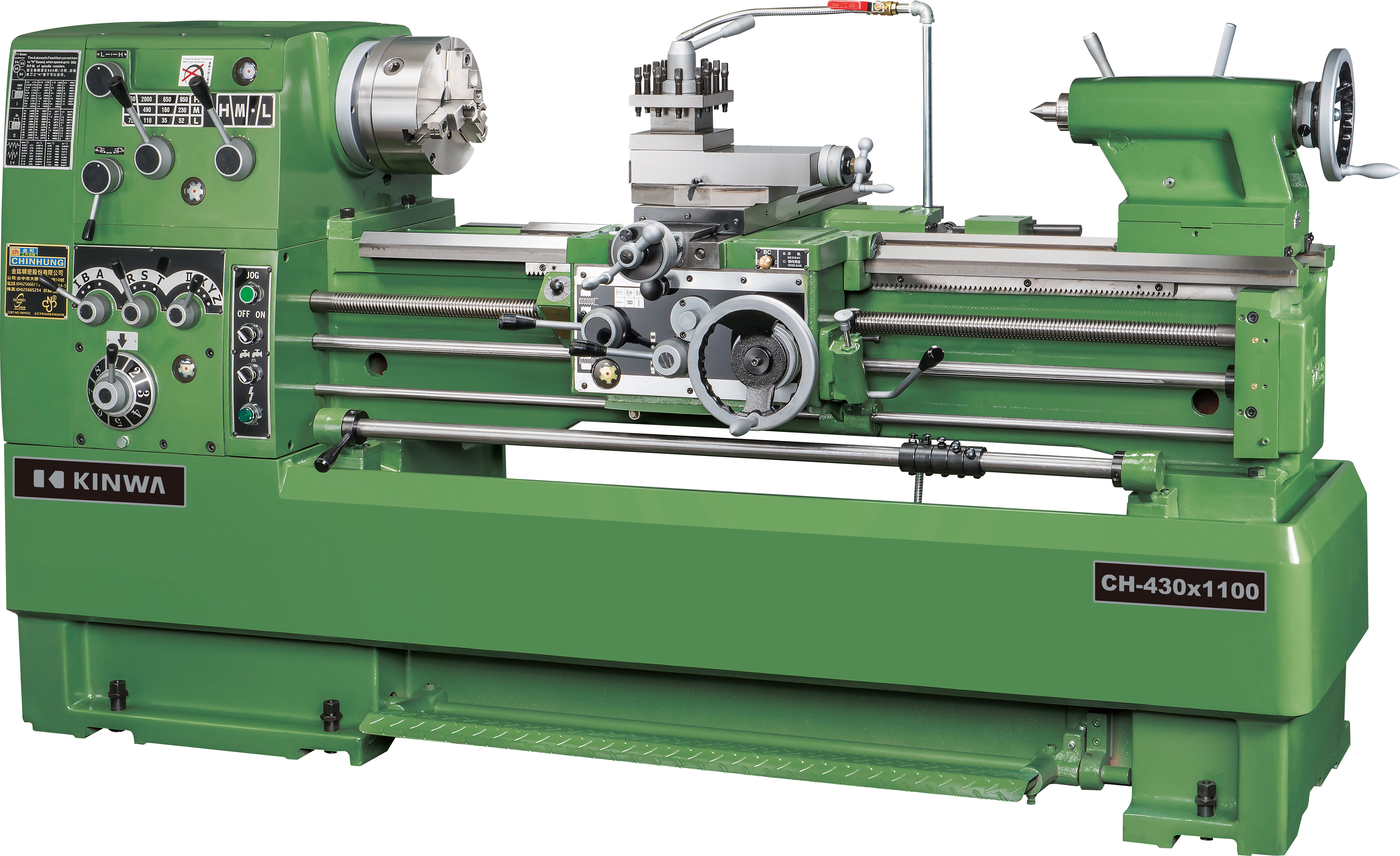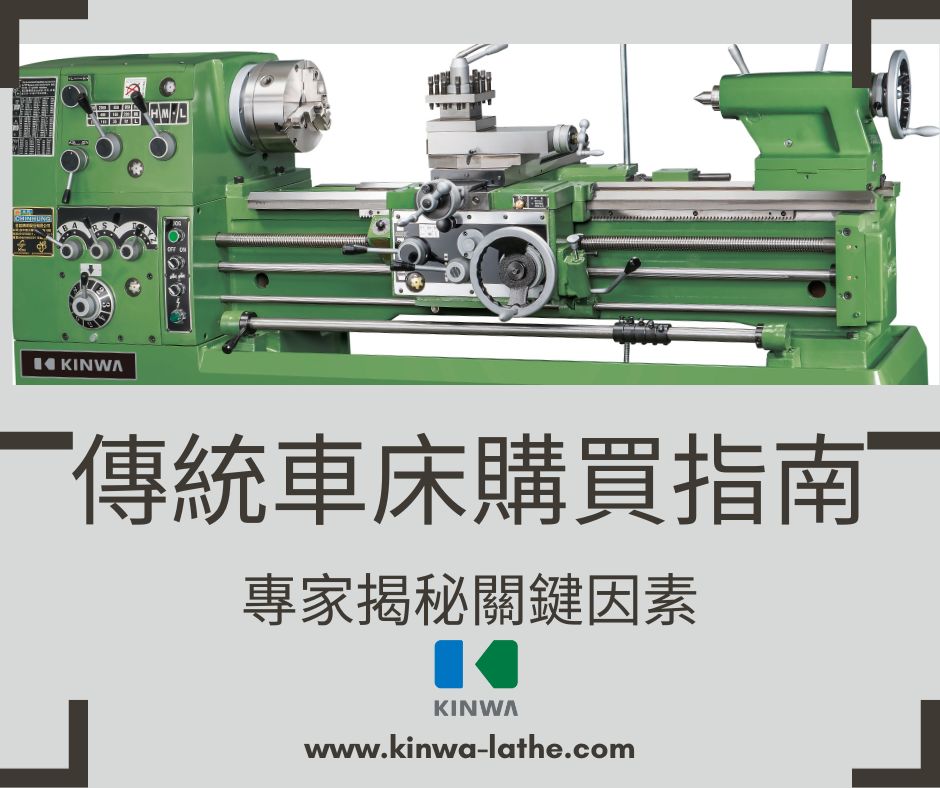Tag Result
#Lathe
Hey, are you looking for lathes with short delivery time?You definitely don't want to miss out on our ML-560M and ML-360.Their near-perfect performance, highly efficient cutting and exceptional machining quality withstand the demands of your shop floor.(Note: ML-360's MAX. Swing Over Bed is Ф600 mm!)Check out their specs here and contact us now! ML-560 : https://reurl.cc/O4EXxA ML-360 : https://reurl.cc/Zb1QYg Follow us here : Website: www.YidaCNC.com Youtube: https://www.youtube.com/channel/UCoI4_Z9sDwrg1FdmW9-N7qQ LinkedIn: https://www.linkedin.com/company/yidacnc Instagram: https://www.instagram.com/yidacnc/
What is the Lathe? The Concept of Turning ProcessThe lathe, also known as a turning machine, is a type of machine used for performing turning operations.Turning process refers to the method of cutting and shaping an object's surface by rotating the object itself and using cutting tools, resulting in a smooth and symmetrical shape.This process is somewhat similar to the hand-throwing process in pottery making. Just like when crafting pottery, the clay keeps rotating, and the artisan shapes the clay into a symmetrical form by hand. Additionally, any rough or uneven parts can be smoothed out using bamboo strips to create a polished appearance.In the turning process, the object being worked on is referred to as the "workpiece," while the tools used for cutting are called "tools" or "cutting tools."To secure the rotating workpiece, a "fixture" or "clamping device" is utilized, and the axis that enables the rotation of the workpiece is known as the "spindle."Lathes can be classified into two types: vertical lathes and horizontal lathes. The "vertical lathe" has its spindle oriented vertically, while the "horizontal lathe" has its spindle parallel to the ground.Both vertical and horizontal lathes have their respective applications, used for different types of turning operations.#Lathe #Turning #Cutting Tools #Workpiece #Fixture #Spindle #Machining
Expert Insights into Machine Tool Knowledge: Exploring Lathe Categories and ApplicationsMachine tools play a pivotal role in the manufacturing sector, and among these tools, the lathe stands out as a common and indispensable machine tool. The lathe is renowned for its capability to process symmetrical components, and based on its distinct characteristics, we can categorize lathes into several primary types, each of which we will delve into.1. Functional Classification:Conventional Lathe:This type of lathe employs mechanical handwheels or manual controls to finely manage the cutting process. While it requires the operator's direct involvement, conventional lathes remain a practical choice in specific contexts.CNC Lathe (Computer Numerical Control Lathe):Equipped with a computer numerical control system, CNC lathes can automatically govern the cutting process. This not only enhances production efficiency but also ensures higher machining accuracy, rendering them an integral part of modern manufacturing.2. Structural Classification:Flat Bed Lathe:In flat bed lathes, the tool post remains parallel to the ground, and the workpiece is positioned on a horizontal bed. This design provides enhanced stability for operations, making it suitable for a variety of machining tasks.Slant Bed Lathe:In slant bed lathes, the tool post is angled, and the workpiece is positioned on a tilted bed. This unique structure aids in the more efficient expulsion of chips, consequently elevating machining efficiency.Vertical Lathe:The tool post in vertical lathes is perpendicular to the ground, and the workpiece is processed on a vertical spindle. This design is commonly employed for specific machining requirements, such as hole drilling.3. Capability Classification:Single-Axis Lathe:Capable of machining solely along a single coordinate axis, single-axis lathes have limited capability. Nevertheless, they find utility in simple component machining tasks.Multi-Axis Lathe:Multi-axis lathes can simultaneously operate on multiple coordinate axes, providing enhanced machining versatility and flexibility. This is particularly critical for the machining of intricate components.4. Size-based Classification:Small-Sized Lathe:Suited for machining small-sized components, these lathes are ideal for precision work.Medium-Sized Lathe:Suitable for processing medium-sized components, medium-sized lathes find widespread application across various industrial sectors.Large-Sized Lathe:Designed to handle larger components, such as propeller shafts, large-sized lathes accommodate greater dimensions and weights.5. Process-based Classification:Conventional Lathe:Primarily employed for flat, cylindrical, and helical surface machining, conventional lathes enjoy a broad application spectrum, making them the preferred choice for many machining tasks.Specialized Lathe:Utilized for shaping components with unique shapes or purposes, such as multi-axis lathes and thread-cutting lathes, these machines are adept at tackling more challenging machining operations.Different types of lathes offer distinct advantages in various scenarios. By comprehending specific requirements, we can better select the appropriate lathe, ensuring efficient and precise machining processes. Whether it's a conventional lathe or an advanced CNC lathe, they all play pivotal roles in modern manufacturing.
Amidst the tide of advanced technology in today's manufacturing industry, traditional lathes have emerged as a captivating craft. Despite the gradual rise of CNC lathes, the unique heritage craftsmanship and technological allure of traditional lathes remain undeniable. Through the manipulation of mechanical handwheels and manual operations, traditional lathes demonstrate exceptional turning and threading capabilities, solidifying their position as an excellent choice for processing rotationally symmetric components.1. Exquisite Craftsmanship:Operating traditional lathes demands proficient artisanal skills, precise tool manipulation, and an abundance of professional knowledge. Leveraging the finesse of mechanical handwheel manipulation, workpieces gracefully rotate on the spindle, while the toolholder is manually adjusted by the operator for precise cutting. This intricate manual operation imbues each processing step with an artistic significance, ensuring the precision and quality of the finished product. The synergy between artisans' dexterity and extensive experience makes the traditional lathe a tool for crafting art.2. Fusion of Tradition and Modernity:Despite the clear advantages of automation and efficiency held by CNC lathes, the flexibility and adjustability of traditional lathes continue to attract customers with unique processing requirements. For non-standard-shaped components, traditional lathes offer adaptability, rendering them the unparalleled choice. This fusion of traditional and modern technology enhances the competitive edge of traditional lathes in the market.3. Heritage and Technological Allure:With a history spanning centuries, traditional lathes have witnessed the passing down of techniques through generations. The allure of inherited craftsmanship is deeply embedded in the fabrication of every component, and each operation pays homage to history and continuity. The preservation of craftsmanship is not merely a technical continuation but also the perpetuation of past wisdom, allowing historical value to shine in the modern era.4. Enhancing Product Quality:For certain specialized components, traditional lathes remain indispensable. In sectors like aerospace, medical, and high-precision instrument manufacturing, traditional lathes offer heightened accuracy and surface quality during machining, ensuring products meet the highest quality standards. This advantage in exceptional quality positions traditional lathes as indispensable players in critical fields.5. Future Outlook:Despite the pressures of competition from CNC lathes, traditional lathes are far from obsolete. Craft enthusiasts and artisans still uphold the traditional lathe as a precious tool, viewing it not only as a manufacturing device but also as a revered asset. Looking ahead, traditional lathes are poised to seamlessly integrate with CNC lathes and other modern machining technologies, unveiling new possibilities. The future of traditional lathes is poised for diversity, evolving into a masterpiece that intertwines modern technology and ancient craftsmanship.In summary, traditional lathes embody not only the inheritance of craftsmanship but also an inexhaustible technological allure. Their exceptional role in the modern manufacturing industry will continue to be vital as times evolve. Whether as a testament to the past or a revelation of the future, traditional lathes will persist in guiding the development of manufacturing, scripting a new chapter in the legend of craftsmanship. Let us collectively witness the resplendence of this remarkable skill in the future!
In-Depth Guide to Purchasing Traditional Lathes: Key Considerations Shared by Industry ExpertsIn today's industrial manufacturing sector, selecting the right lathe is pivotal for enhancing production efficiency and ensuring product quality. For businesses and professionals planning to purchase a traditional lathe, understanding the key considerations is crucial. Here are the seven essential factors to consider, as recommended by industry experts:1. Application and Workpiece SpecificationsWhen choosing a lathe, the first consideration should be the type, size, and material of the workpieces you intend to process. Your choice of lathe should be based on whether it's used for general metalworking, heavy-duty machining, or precision engineering.2. Lathe SizeThe bed length, swing over the bed, and maximum turning diameter of the lathe are critical factors that determine the size of workpieces you can process. Choosing a lathe with the appropriate dimensions ensures that your machining needs are met.3. Power and Speed RangeSelecting the appropriate speed range based on the material and machining requirements is crucial. Consider the spindle speed of the lathe and whether it offers the suitable speed gears and ranges for your specific needs.4. Accuracy and RepeatabilityDifferent production requirements call for varying levels of accuracy and repeatability. For applications requiring high precision, choosing a lathe with high accuracy specifications is key.5. Brand and After-Sales ServiceOpting for a well-known brand can generally guarantee better quality and service. Good after-sales service not only provides necessary technical support but also saves on future maintenance and repair costs.6. Safety FeaturesOperational safety is an aspect that cannot be overlooked in industrial manufacturing. Ensure that the chosen lathe is equipped with adequate safety features, such as emergency stop switches and guards, which are essential for the safety of the operators.7. Budget and PriceAfter considering all technical specifications and functional requirements, your choice should also take into account the budget. Selecting a lathe that fits your budget while meeting all your needs is a wise decision.Additional TipsBeyond these basic elements, when selecting a lathe, you should also consider additional accessories, tools, and the expandability of the lathe. These factors can impact your final purchasing decision.Purchasing a traditional lathe is an important and complex process. With these professional insights, you can make a more informed choice, ensuring that your investment yields the maximum return.
We use cookies to optimize and continuously update it according to your needs.The settings can be changed at any time under "Privacy"


